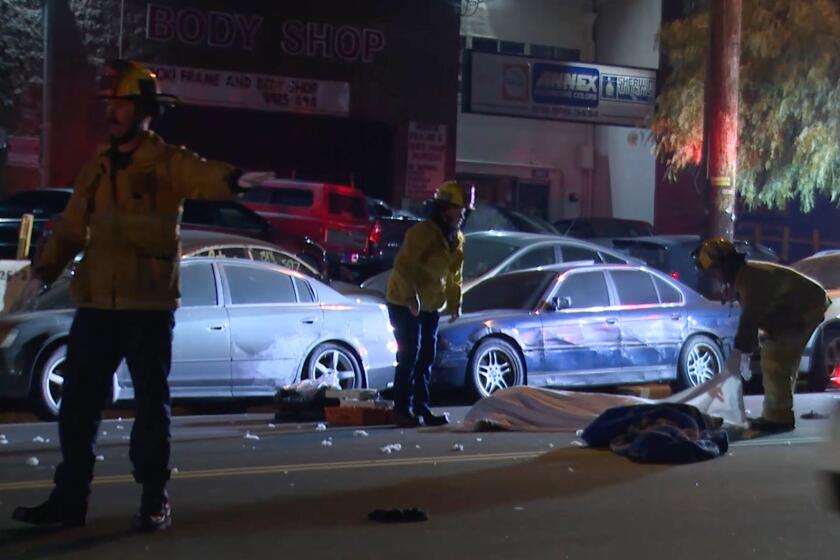
- Share via
The rain was pounding in the Mojave Desert on the Saturday before Easter when the first call came in about a crash along Interstate 15. Details were sketchy: head-on collision, Mercedes versus another car, a 7-year-old not breathing, a nurse on scene performing CPR.
San Bernardino County Fire Protection District Capt. Dan Tellez and his crew were more than a half hour away. The next closest responding ambulance was more than 70 miles away, and the nearest trauma center was more than an hour away by road — if there was no traffic.
Fire Station 53 in the tiny town of Baker, home to the “world’s tallest thermometer,” has the only dedicated emergency medical services to cover a 93-mile span of the four-lane highway between Yermo and the Nevada border.
The freeway draws more than 15 million vehicles a year through an immense, mostly empty land of extreme heat and occasional bitter cold between Las Vegas and Los Angeles. Every day, well over a hundred times Baker’s own population of 422 people blazes by — often at very high speeds, sometimes intoxicated — and the rescuers in this little blip out their windows will be the ones who try to save them in a wreck.
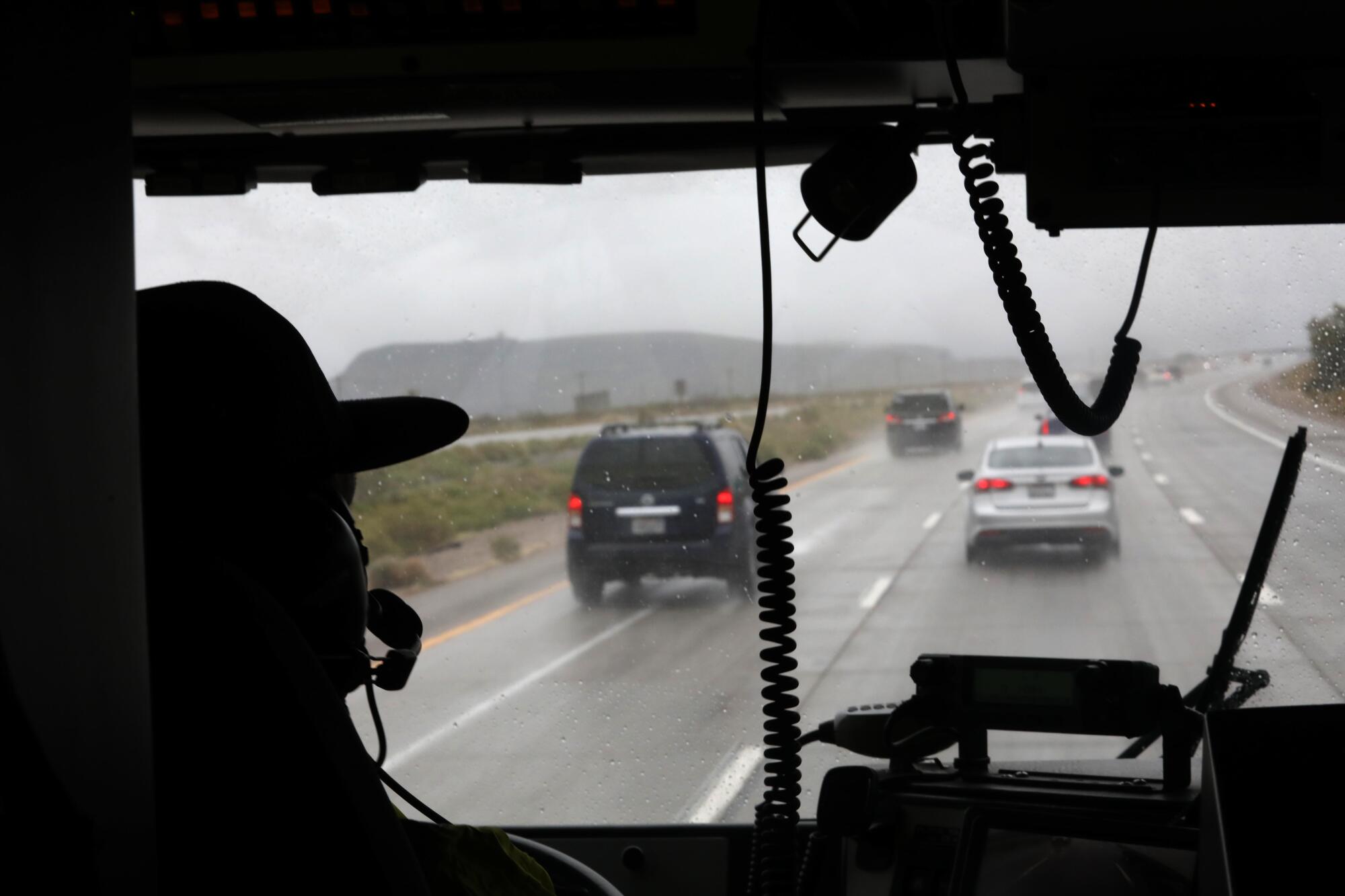
“The freeway is our population,” Tellez said. “When somebody crashes out here, when somebody needs help, we are it.”
At any one time, there are only five people assigned to the station set on the edge of a sandy basin speckled with yucca and scrub. The crew work four-day shifts and cover roughly 5,000 square miles, an area larger than Los Angeles County. And this arrangement is an improvement from years past, when the station didn’t exist and convicts from a nearby prison, under the supervision of a fire captain, responded to highway crashes.
Tellez, a veteran firefighter who was in charge of Fire Station No. 53 that rainy day, pulled up to the scene 40 minutes after the call.
They were just seven miles from the station, at mile marker 145, near Halloran Springs. But the reality of Fire Station 53 is that rescuers are often elsewhere, sometimes far away. Tellez had been near the Nevada border, about 25 miles from the scene of the accident, when the call came through.
He arrived behind the unit’s two-man ambulance with his engineer and firefighter. They were the first paramedics to arrive. Had the incident happened in Los Angeles or Las Vegas, paramedics, police and other emergency personnel would have swarmed the area in minutes. Television crews likely wouldn’t have been far behind.

The wind was howling and people were strewn along the highway amid the wreckage of a Mercedes GLE 350 and a Kia Sorento. He had expected three or four injured people. There were 10.
“It was one of the worst-case scenarios,” Tellez said.
Other drivers had pulled over to help. An emergency room doctor, a pediatric anesthesiologist, some nurses and others were tending to the injured.
Witnesses said the Kia had been speeding toward Los Angeles.
William Coddington was at the wheel with his partner, Alicia Ramos, at his side and their two children and his two stepchildren in back. The couple’s relationship had been on the rocks and this trip was an attempt to repair their relationship, family members said.
“Her mother begged her not to go,” said Marie Hernandez, Ramos’ cousin.
Driving the opposite way were Cristobal Cortes Castillo, 37, his girlfriend, Iliana German, 35 and her two children — taking advantage of the kids’ spring break to visit family on a road they regularly traveled.
As they approached mile marker 145, German turned around to ask the kids if they had their seat belts on. They did.
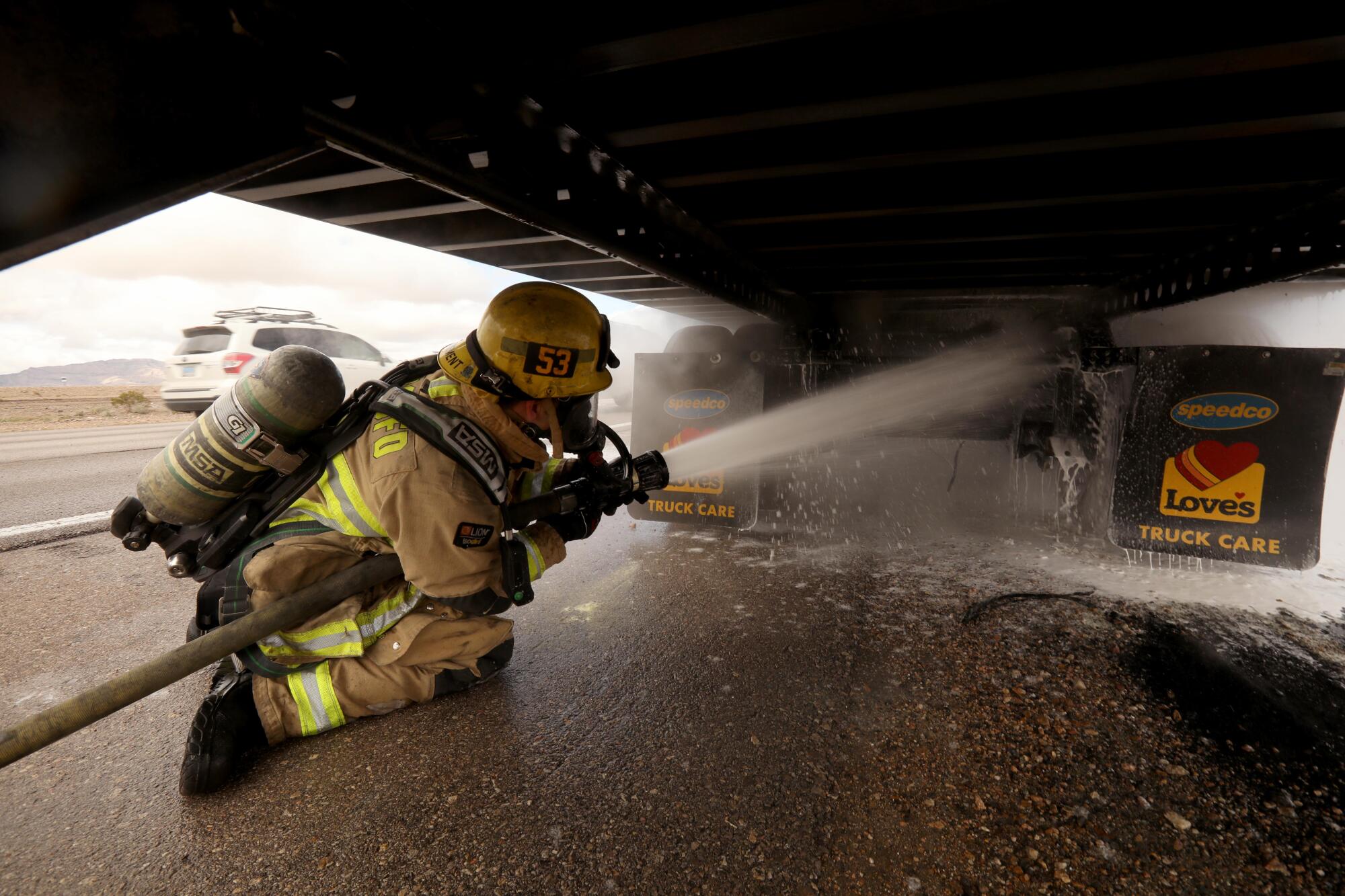
Coming toward them, Coddington lost control and the Kia hydroplaned, then barreled over the median, according to the California Highway Patrol.
In the Mercedes, German came to with her body crushed under the dashboard. Trapped, she felt like she couldn’t breathe. Then a woman opened the door and took off her belt. She asked for her children, and was assured they were fine.
She heard her daughter Danna, 12, scream, “Mi pierna, mi pierna!” My leg. But she never heard her 11-year-old son, Derek.
“I felt like so much time was passing,” she said. “I didn’t know if anyone was going to help us.”
She didn’t know people were trying to resuscitate Derek — her sweet, generous boy who played soccer and was learning to box. He died before the sirens arrived.
In the Kia, Ramos — beloved at the Madera nursing home where she worked — was fatally injured and would die in a hospital that day. Her teenage son Isaac, 13, was already dead. Coddington was lying on the ground bleeding, alive but staring blankly. His 3-year-old boy, Liam, lost an arm.
In L.A., 336 people died in crashes in 2023 and more than half of them were pedestrians. That’s the highest number in more than 20 years and advocates are demanding action.
Between 2019 and 2023, at least 112 people died in crashes along the span, often the result of speeding or intoxicated drivers, CHP data show. Fire Station 53 responded to nearly 1,000 calls on that roadway last year, at least half of which were crashes.
Those incidents involved just a fraction of the more than 41,000 cars and trucks that barrel along the stretch of highway every day, according to state data analyzed by Ben Hodgson and Natan Euol at the Road Ecology Center at UC Davis.
Tellez, who has a handlebar mustache and soft eyes, has been with San Bernardino County fire for more than three decades and, like most firefighters, has seen his share of twisted metal, charred earth and human agony on the asphalt. Working in Baker is different, he said. There is no backup at the station. There’s no hospital in town. There’s no night crew. There’s miles and miles of road and desert. The blistering heat — with an average high temperature that’s more than 100 degrees four months of the year — only heightens the sense of desolation.
Pedestrians hit at night can be struck so many times, their bodies become unrecognizable. Competing calls force firefighters to make impossible trade-offs, choosing their emergency.
“It’s a beautiful desert,” he said. “But it will kill you.”
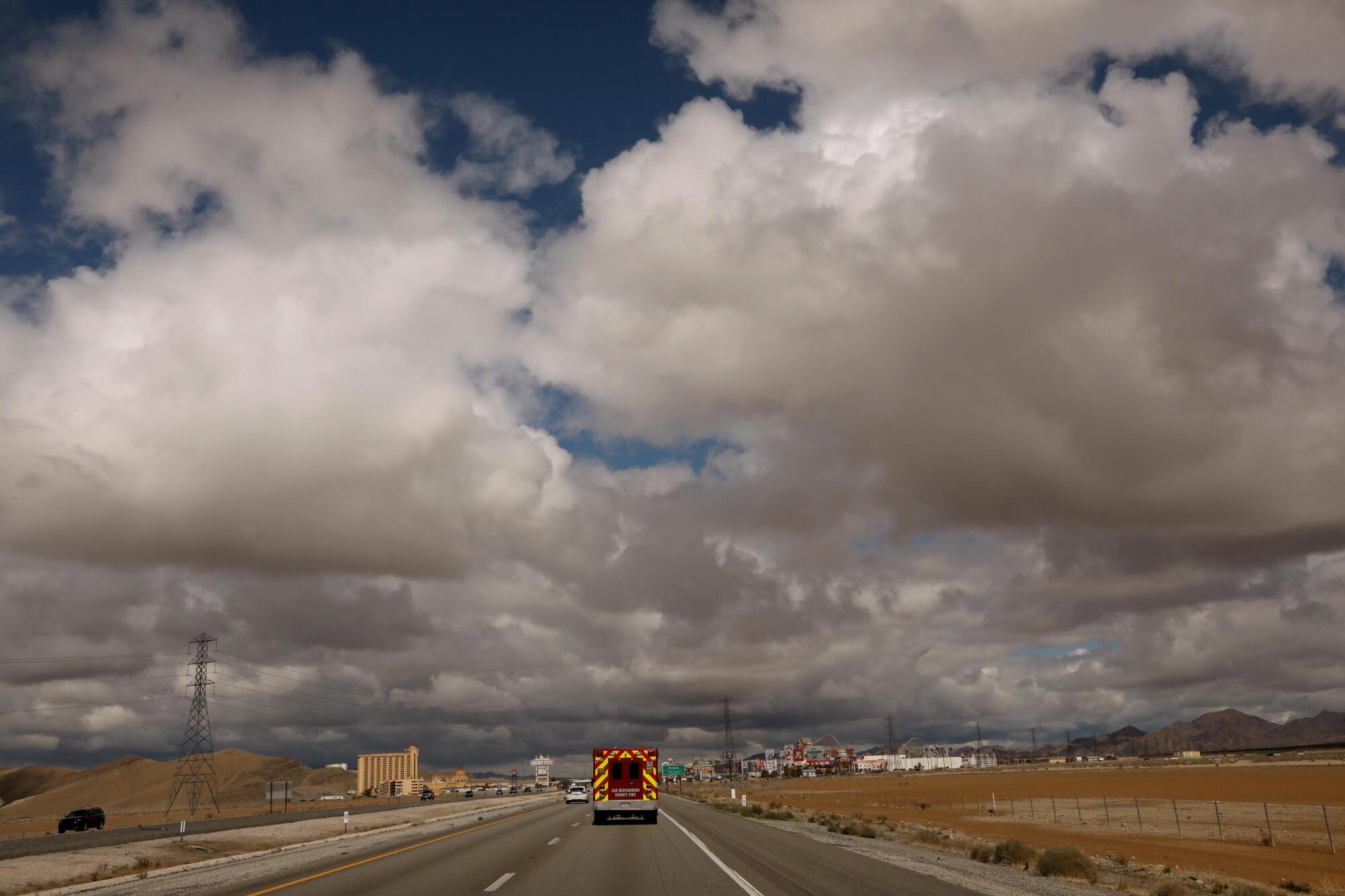
Beyond I-15, the station covers, to the north, the majestic Dumont Dunes, popular with off-roaders, and Highway 127, a main gateway to Death Valley. To the south, its territory extends to Interstate 40, a major transcontinental trucking route; its 140-mile stretch from Barstow to Needles has no first responders stationed between the two cities. Fire Station 53 is closest to the middle of that expanse, about 57 miles away on Kelbaker Road. Depending where they are when the call comes in, it can take up to 1½ hours to arrive at an accident on Interstate 40.
Cars regularly overheat, big rigs catch fire on the side of the road. Motorists get stuck deep in the desert, dehydrated and without water. And in winter they spin out or crash in icy conditions on I-15 through Mountain Pass— elevation 4,700 feet.
Few understand how isolated the route can be, Tellez said.
“What took you so long?” Tellez frequently hears when he arrives on the scene. “And I’m like, ‘Do you know where you are?’
“Many people think there’s a hospital here in Baker, a police department here,” he said. “No, this is not that type of town.”
There’s not even a major grocery store, only a handful of truck stops, fast-food restaurants, gas stations, trailers, some homes and a single traffic signal installed nine years ago in front of Baker Travel Plaza.
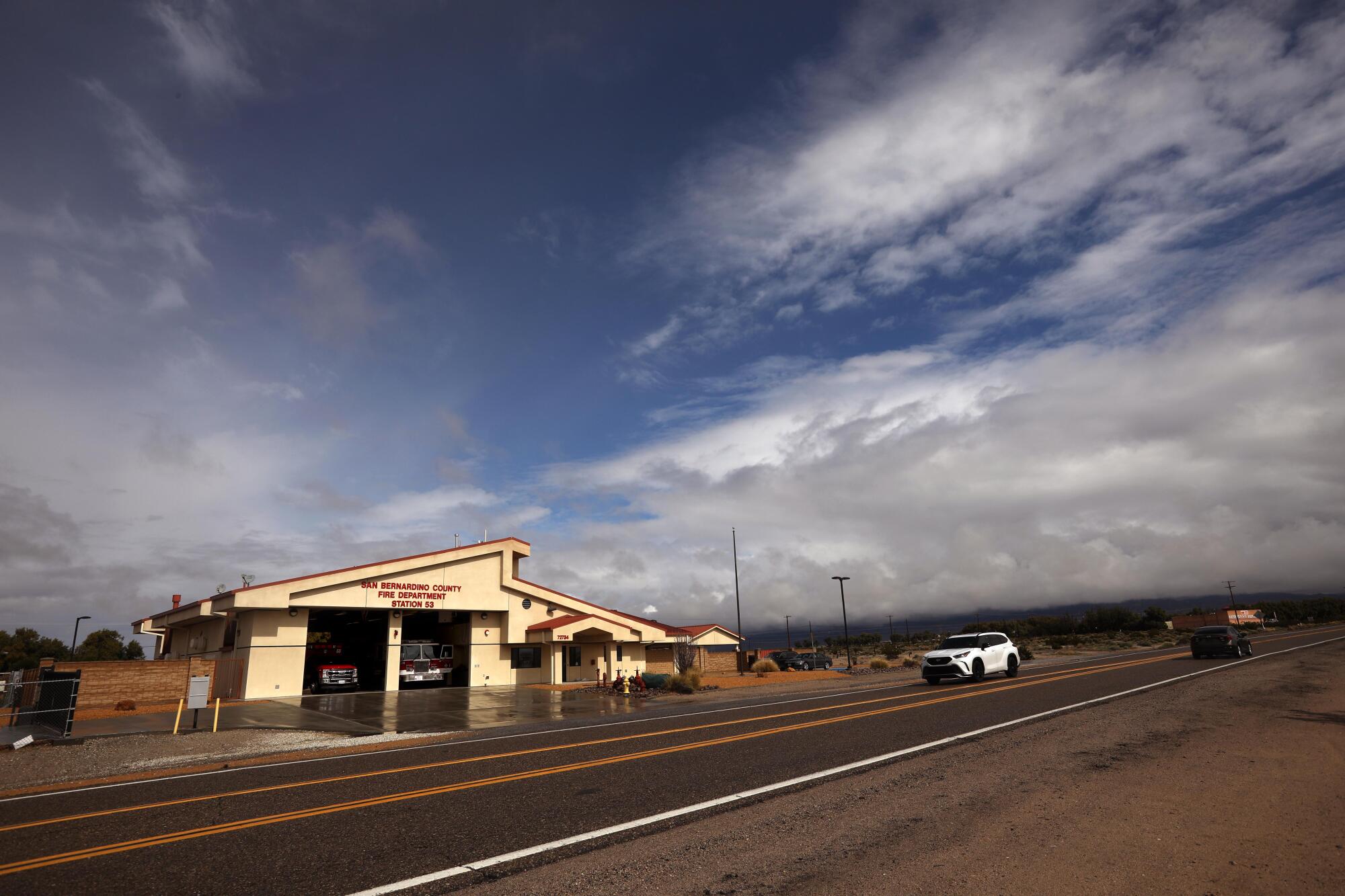
And then there are other emergencies, including massive wildfires threatening the area’s sensitive habitat and train derailments.
Brightline West recently broke ground in Las Vegas to build a high-speed rail to connect the Strip to Southern California. It hopes to open by 2028, which will make the area an active construction zone for years. The specter of a train going up to 200 mph in the solitude of the desert raises many unanswered questions, said San Bernardino County Fire Chief Dan Munsey.
How would the district deal with a major emergency should the train stop or crash when it’s 120 degrees outside? Even more basic, how will communications with first responders work?
Rescuers could also lose even more time than they do now, because they will have to wait for designated railroad crossings to get across the median to opposite lanes.
Munsey said the district has reached out to Brightline to talk through some of these issues, and the conversations are pending.
But for now, there are no plans for adding services or personnel. The San Bernardino County Fire Protection District is largely funded by property taxes, and in the Mojave much of the land is owned by the federal government and untaxed.
The result is often triage on the highway.
The hardest calls for the crew are those involving children.
At mile marker 145, the responders declared the two children deceased and they scrambled to rescue the rest.
The blanket of clouds overhead made it nearly impossible for medical helicopters to land nearby.
Tellez called for more backup. Paramedics came from Las Vegas, another from Helendale and one was dispatched from a nearby Marine base. But the backup from the crash and the holiday weekend traffic slowed them down.
At first, dispatchers refused to send air medics because of the weather, but after some negotiations five helicopters landed 30 miles south, at Afton Canyon Road. It was about two hours past the initial call. The closest trauma center was in Las Vegas, but the weather was so bad, the victims were flown to Antelope Valley Medical Center, in the opposite direction.
“The farther you get away from the trauma center, the clock starts ticking down there,” Tellez said. “And when you run out of that time, you are on borrowed time.”
The golden hour — as it is called — refers to the first 60 minutes after a crash in which critically injured patients have the greatest chance of survival.
“Out here, it’s almost impossible to stay within that hour,” Tellez said.
It’s hard to tell if any more lives might have been saved by arriving to a trauma center faster that day, Tellez said. But you can’t escape the what ifs.
“If we had the airships there sooner, they could have … just offloaded patients right into the airships to go to the trauma center.”
California Highway Patrol shut down the highway for hours and more than a month later continues to investigate.
“Everybody did everything they could,” said one woman who posted an emotional TikTok video about the hours she spent on the side of the road. “Everybody who was there restored my faith in humanity.”
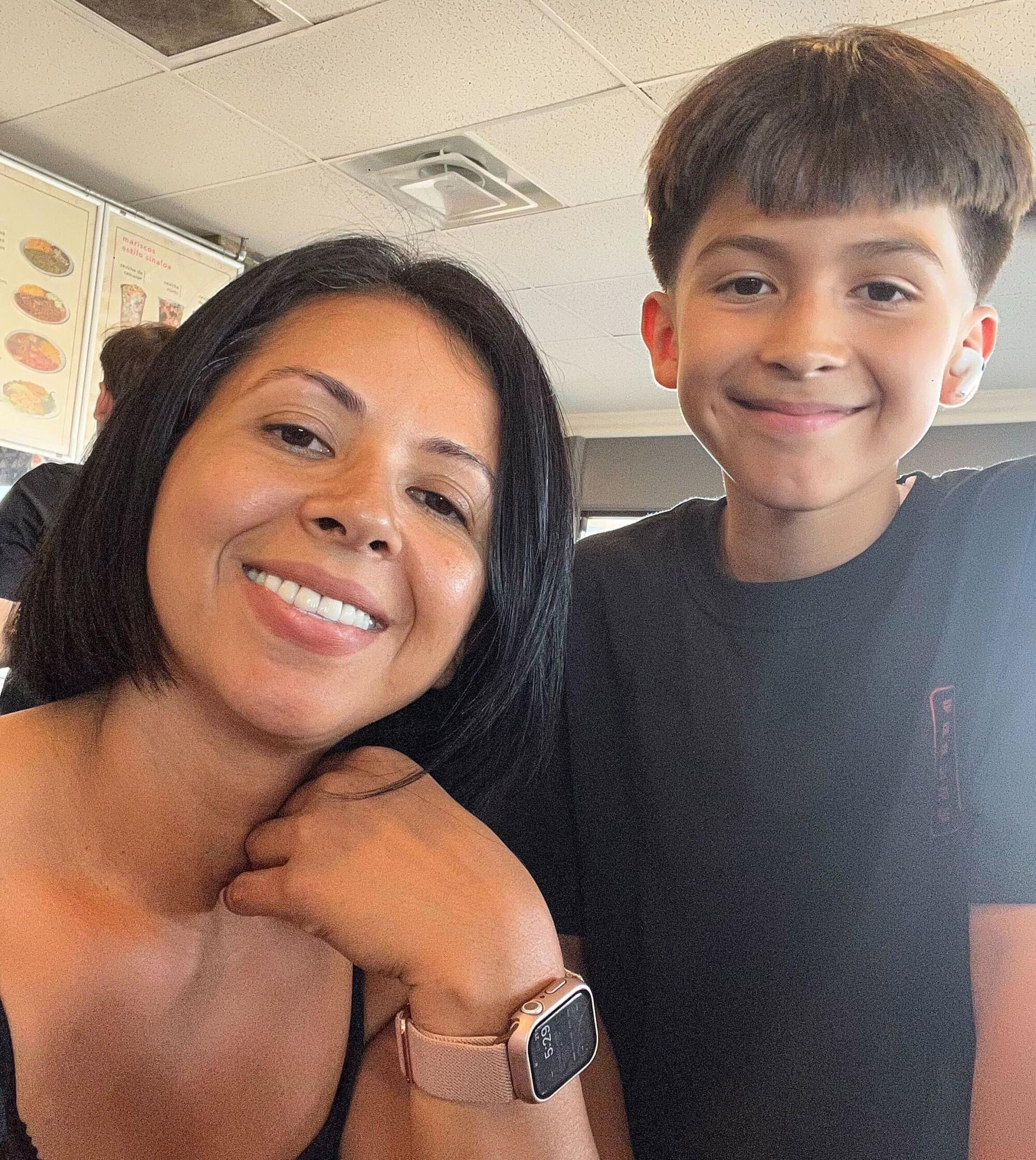
German and her daughter were airlifted to Antelope Valley Medical Center. She was in the intensive care unit for five days and still can’t walk because of the bones broken in her foot. Her daughter is also recovering.
“It’s difficult to understand why, why did this happen,” said her partner, Castillo, who replays the crash in his mind.
For the record:
5:14 p.m. May 16, 2024An earlier version of this article mentioned the University Medical Center Southern Las Vegas. It is the University Medical Center Southern Nevada.
“It is just emotionally devastating for families to realize that when they hopped into their car, everyone was well and happy and looking forward to wherever they were headed,” said Dr. Deborah Kuhls, head of trauma at the University Medical Center Southern Nevada. The center is the closest trauma center for crash victims along the interstate. Last year, doctors there treated at least 40 patients involved in collisions along the highway.
“They have no idea that in a moment their lives can either be ended or changed forever.”
After the Easter weekend crash, there was an internal support team there to check on responders. Still, the next day it weighed heavy on many.
“It was an ominous gray kind of mood that hovered over us,” said San Bernardino County Fire Engineer Jeff Garcia. The rains kept the crews racing up and down the highway during that shift. The engine logged more than 800 miles. “We didn’t sleep that night.”
There are always those calls you remember, Tellez said. But then you must quickly collect yourself and go to another.
“I have seen enough trauma to last a lifetime,” he said.
More to Read
Sign up for Essential California
The most important California stories and recommendations in your inbox every morning.
You may occasionally receive promotional content from the Los Angeles Times.

